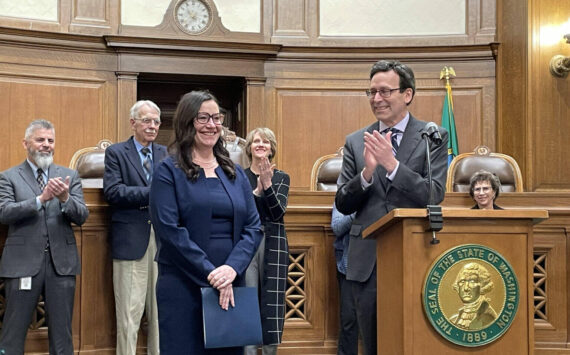Someone went through a lot of trouble to very accurately depict The Simpsons intro with real-life actors. Im not sure who created it, but the 59-second video ( http://www.youtube.com/browse?s=mp&t=a ) is wildly popular, rated as the second most watched video on YouTube.com, with 6,049,826 views since it was posted March 3.
Internet videos — or to be up on the latest label, vodcasts — are booming. YouTube is the biggest video site in the blogosphere, getting more traffic than the New York Times Web site. Apples iTunes store has sold a gazillion videos since its debut. The stoic BBC is revamping itself so viewers will be able to download any program from the eight BBC channels and then watch it on their PC. And politically-oriented Web video is on the rise:
— Google teamed up with Al Gores Current TV network to provide Google Current.
— Amazon.com teamed up with left-wing comedian Bill Maher for an online talk show.
— iTunes offers a discount price for Comedy Centrals liberal The Daily Show with Jon Stewart.
— AOL joined with the Huffington Post to provide Contagious Festival, a collection of liberal short movies.
What text blogging has done to print media, vodcasts, videoblogging, digital video 2.0, or whatever you want to call it promises to do to broadcast media: kick down doors to unprecedented participation by citizen/”non-traditional” journalists.
The second wave of digital video will be far more disruptive than the first and the foundations of traditional media will be swept away, BBC Director General Mark Thompson said recently.
The BBC was worried the digital generation would become bored with them after being captivated by YouTube and MySpace, and creating their own content. The network is now revamping its Web site to include user-generated content such as blogs, music, and home videos.
The BBC should no longer think of itself as a broadcaster of TV and radio (with) some new media on the side, added Thompson said.
At any time, you’ll be able to download any program from the eight BBC channels and then watch it on your PC and, we hope, move it across to your TV set or down to your mobile phone, to watch it when you want,” said Ashley Highfield, BBCs Director of New Media and Technology.
According to a study of more than 1,200 Internet users released by the Online Publishers Association, 24 percent said they watched online video at least once a week, while 46 percent said they watched at least once a month. Theyre watching the full spectrum, from the average guy making a funny home video to the big networks like CBS and Disney/ABC putting out free primetime programming.
There are always two sides to online video: watching and creating. As with many personal interests, once you become engaged by watching, you may start thinking what you can do with it. Just view some of the videos on YouTube.com and you can see its pretty simple. Anyone with a video camera and a computer can create a vodcast. The iTunes vodcast list contains more than 100 producers — from ABCs daily news to Rocketboom’s wacky news reports. My husband loves Rocketboom so much, hes networked his computer to our Tivo and then subscribed to it so he can watch the five-minute program everyday after he comes home from work.
If you want to explore the world of watching, creating, and sharing online videos, I suggest http://www.internetvideomag.com . Ive subscribed to their email newsletter for years. They have articles, tutorials, news, and extensive lists of the best video Web sites.






